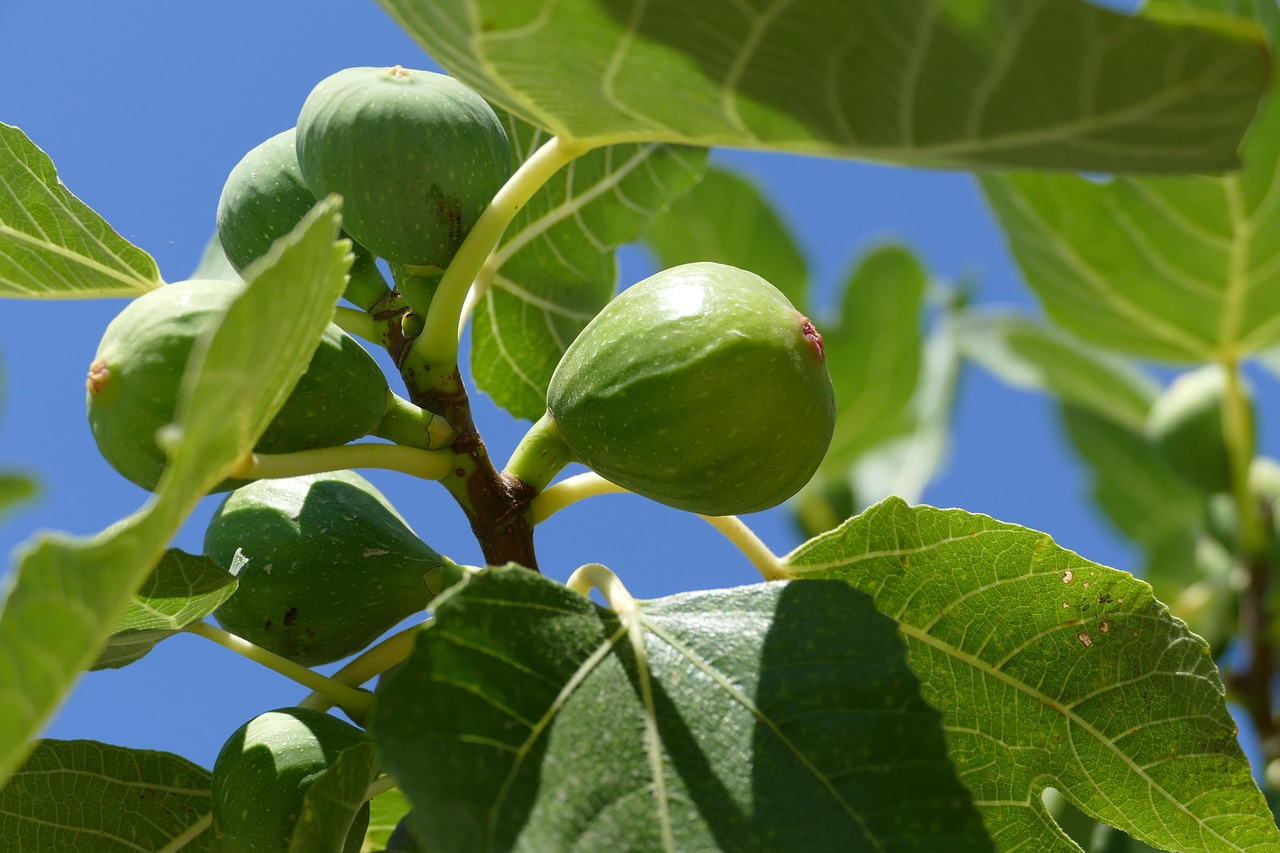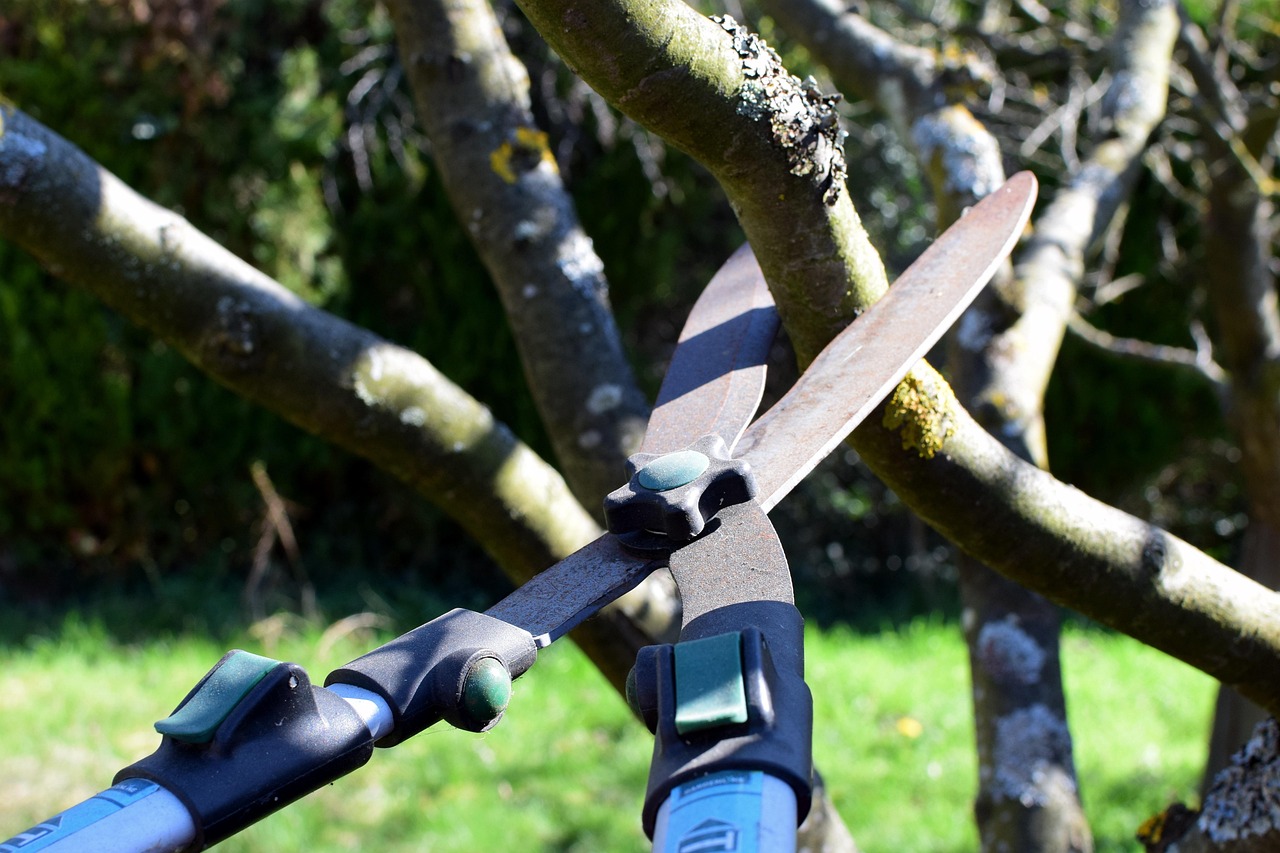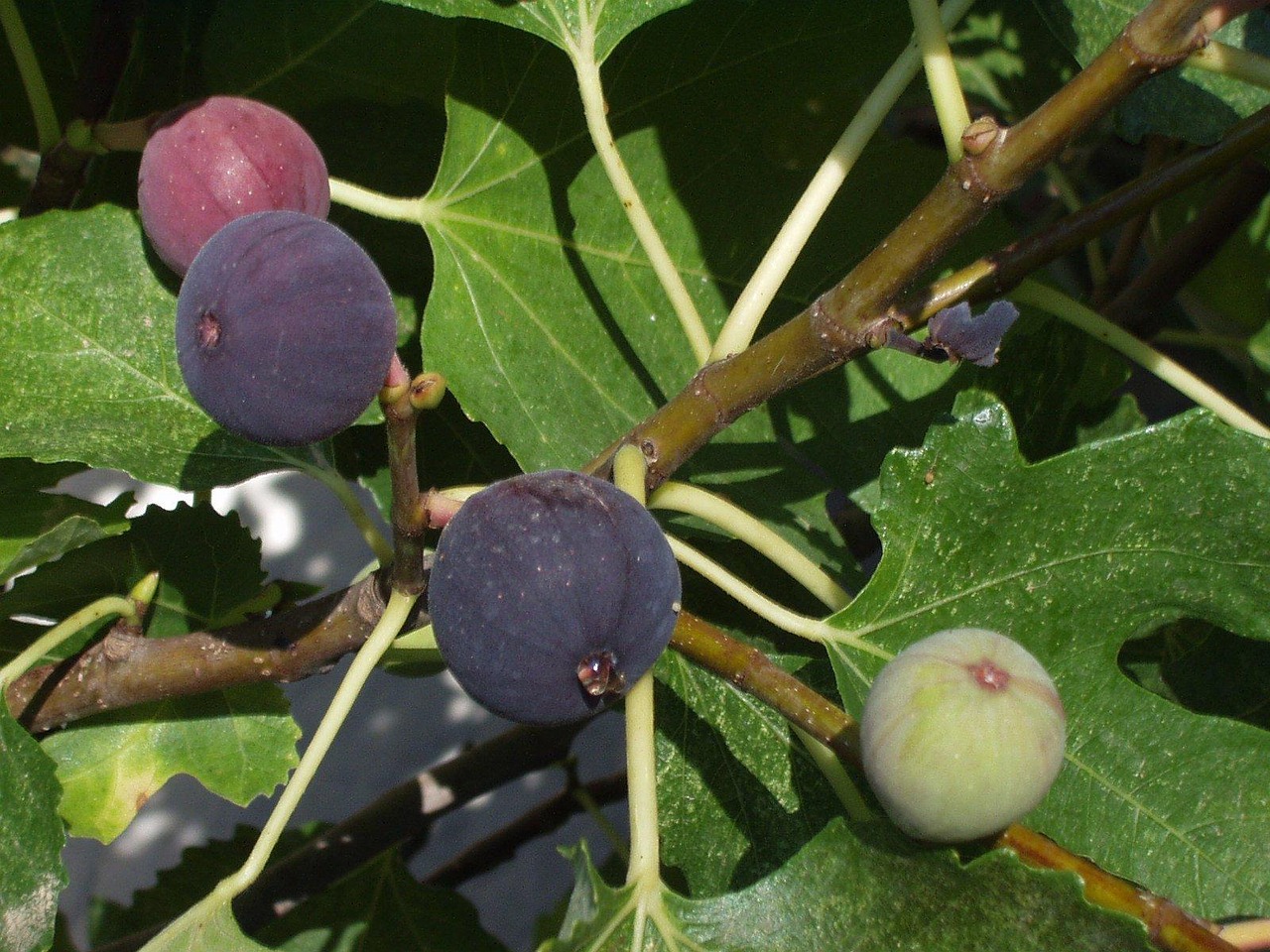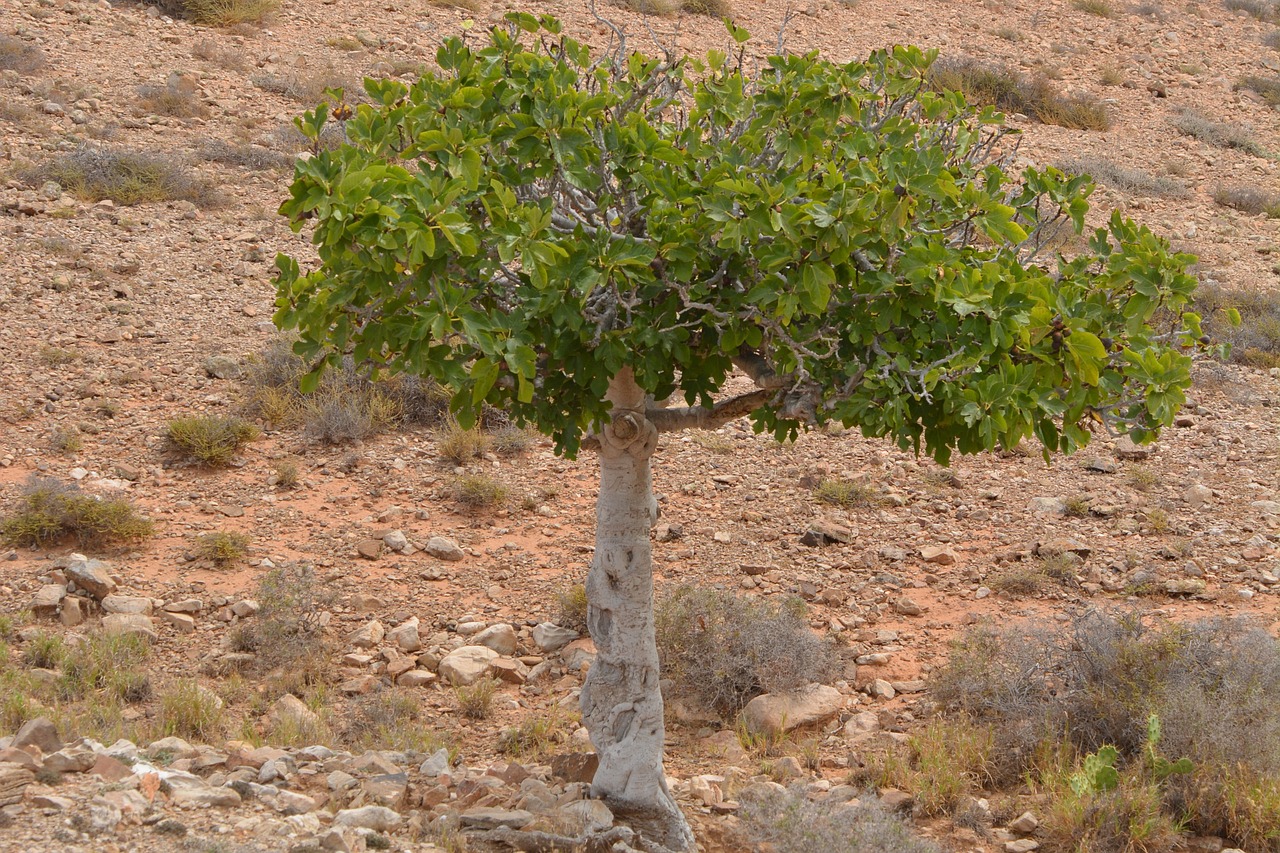Fig tree pruning for decorative potting involves selectively cutting branches to shape the tree, promote healthy growth, and enhance its aesthetic appeal. Proper pruning techniques ensure a well-balanced structure and vibrant foliage, making fig trees an attractive addition to indoor or outdoor spaces.
Fig trees are known for their lush green leaves and delicious fruits. They can be grown both indoors and outdoors, making them a versatile choice for gardeners. When grown in pots, these trees require specific care to thrive. One of the most important aspects of maintaining a healthy fig tree is pruning. Pruning not only helps to control the size of the tree but also enhances its overall appearance.

Pruning fig trees can seem daunting, especially for novice gardeners. However, understanding the basics can simplify the process. The right pruning techniques can result in stronger branches, healthier leaves, and increased fruit production. Additionally, pruning can help eliminate any dead or diseased wood, which can be harmful to the plant.
Understanding Fig Trees
Fig trees belong to the genus Ficus and are native to the Mediterranean region. They are deciduous trees that can grow quite large in their natural habitat but can easily be maintained at a smaller size when potted. Fig trees have broad leaves that provide ample shade and contribute to their ornamental value.
Here are some key characteristics of fig trees:

| Characteristic | Description |
|---|---|
| Height | Can grow up to 30 feet in the wild; typically 3-6 feet in pots |
| Leaves | Lobed and broad, providing a tropical appearance |
| Fruit | Sweet and edible; varies in color from green to purple |
| Growth Habit | Can be bushy or tree-like depending on pruning |
When considering fig tree pruning, it is essential to learn about the tree’s growth cycle. Fig trees typically experience two main growth periods: spring and summer. Understanding these cycles will help you determine the best time for pruning.
The Importance of Pruning
Pruning is crucial for several reasons. First, it helps to maintain the size and shape of the fig tree, especially when grown in a decorative pot. A well-shaped tree is not only more appealing but also healthier. Pruning encourages better air circulation, which is vital for preventing diseases.
Furthermore, pruning allows for better light penetration throughout the canopy. This is particularly important for potted fig trees, as they may not receive as much sunlight as those planted in the ground. By removing excess branches, you can ensure that all parts of the tree receive adequate light.

When to Prune Fig Trees
The best time to prune fig trees depends on their age and growth stage. For young fig trees, light pruning can be done during the growing season to shape them. More substantial pruning should occur in late winter or early spring before new growth begins. This timing allows the tree to heal before it enters its active growth phase.
It’s crucial to avoid heavy pruning in late summer or fall. Doing so can stimulate new growth that will not have enough time to mature before winter, leaving the tree vulnerable to cold temperatures.
Tools Needed for Pruning
Having the right tools is essential for effective fig tree pruning. Here are some tools you may need:

- Pruning Shears: Ideal for cutting small branches and stems.
- Loppers: Useful for larger branches that are too thick for shears.
- Saw: Necessary for very thick branches that require more force to cut.
- Gloves: Protect your hands from cuts and sap.
- Paintbrush: Helpful for applying sealant to larger cuts.
Using sharp tools ensures clean cuts, which reduces the risk of infection and promotes quicker healing for the tree.
Basic Pruning Techniques
Understanding basic pruning techniques will help you effectively manage your fig tree’s growth. Here are some methods to consider:
- Thinning: Remove some branches to reduce overcrowding and improve air circulation.
- Crown Reduction: Trim back the height of the tree to control its size.
- Heading Back: Cut back stems to encourage bushier growth.
Each technique serves a specific purpose and can be used based on your goals for the fig tree. For example, if you want a fuller plant, consider heading back some branches while also thinning others for balance.
Advanced Pruning Techniques
Once you are comfortable with basic pruning methods, you may want to explore advanced techniques. These methods can further enhance the shape and health of your fig tree, especially when aiming for decorative potting. Advanced techniques include selective pruning, rejuvenation pruning, and training the tree.
Selective Pruning
Selective pruning involves carefully choosing which branches to remove based on their age, health, and position. This technique focuses on enhancing the overall structure and reducing any unnecessary weight on the tree.
- Remove Dead or Diseased Wood: Always start by eliminating branches that show signs of disease or decay. This prevents the spread of pests and diseases to healthy parts of the tree.
- Focus on Weak Growth: Identify branches that are weak or growing inward. These branches can create crowding and should be pruned back to promote a healthier structure.
- Maintain Balance: Ensure that you keep the tree symmetrical. This not only improves its aesthetic appeal but also helps the tree distribute nutrients evenly.
Rejuvenation Pruning
This technique is particularly useful for older fig trees that have become overgrown or unproductive. Rejuvenation pruning involves cutting back a significant portion of the tree to encourage new growth.
Here are the steps to perform rejuvenation pruning:
- Timing: The best time for rejuvenation pruning is during late winter or early spring before new growth begins.
- Assess the Tree: Evaluate which branches are weak, dead, or unproductive. Focus on those that need removal.
- Cut Back Branches: Remove one-third to one-half of the tree’s height. This drastic cut will stimulate new growth in the spring.
- Monitor New Growth: After pruning, watch for new shoots. Ensure they are healthy and evenly spaced.
Training Your Fig Tree
Training involves directing the growth of your fig tree into a specific shape or form. This is particularly useful for decorative potting as it can enhance visual appeal.
Common training methods include:
- Cordon Training: Train the tree to grow horizontally along a support structure, creating a flat, fan-like shape.
- Espalier: This method involves training branches against a wall or fence, allowing for creative designs while maximizing space.
- Pyramid Training: This technique encourages upward growth while maintaining a pyramid shape, which can be visually appealing in pots.
Common Mistakes in Fig Tree Pruning
While pruning is beneficial, there are common mistakes that gardeners should avoid to ensure the health of their fig trees. Awareness of these pitfalls can help maintain optimal growth and appearance.
- Pruning at the Wrong Time: Pruning during late summer or fall can lead to growth issues in colder months. Always prune before the growing season starts.
- Over-Pruning: Removing too many branches can stress the tree and reduce fruit production. Aim for balance in your pruning efforts.
- Ignoring Tree Health: Failing to assess the health of branches before pruning can worsen existing issues. Always check for diseases or infestations first.
Caring for Your Fig Tree Post-Pruning
After pruning, providing proper care is crucial for helping your fig tree recover and thrive. Here are some essential care tips:
- Watering: Ensure your fig tree receives adequate water after pruning, especially if it has been significantly cut back. Consistent moisture supports new growth.
- Fertilizing: Use a balanced fertilizer about a month after pruning to provide nutrients for recovery and encourage healthy growth.
- Pest Control: Keep an eye out for pests that may take advantage of the tree’s reduced foliage. Regular inspections and treatments may be necessary.
Monitoring Growth
After pruning, closely monitor your fig tree’s growth throughout the growing season. Look for signs of healthy leaf development and any new fruit formation. If you observe any issues, address them promptly to ensure your fig tree remains healthy and vibrant.
A well-cared-for fig tree will not only provide delicious fruits but also serve as an attractive centerpiece in your garden or home. Adopting effective pruning and care practices will contribute significantly to achieving this goal.
Pest Management Strategies
Pests can pose significant challenges to fig trees. Knowing how to manage them is essential for maintaining a healthy plant. Here are common pests that affect fig trees and strategies for managing them:
| Pest | Description | Management Strategy |
|---|---|---|
| Fig Beetle | A small beetle that feeds on leaves and fruit. | Use insecticidal soap or neem oil as a preventive measure. |
| Aphids | Tiny insects that suck sap from leaves, causing curling and yellowing. | Introduce natural predators like ladybugs or use insecticidal soap. |
| Spider Mites | Microscopic pests that cause stippling on leaves. | Increase humidity around the plant and use miticides if necessary. |
By staying proactive about pest management, you can help ensure your fig tree remains healthy and vibrant throughout its growth cycle.
Choosing the Right Container for Fig Trees
The choice of container is vital when potting fig trees. A suitable pot not only supports healthy root growth but also enhances the overall appearance of the plant. Several factors should be considered when selecting a container for your fig tree.
Size of the Container
Choosing the right size pot is crucial for the long-term health of your fig tree. A pot that is too small can restrict root growth, leading to poor overall health. Conversely, a pot that is too large can retain excess moisture, which may result in root rot.
- Initial Pot Size: For young fig trees, a pot that is 12 to 14 inches in diameter is usually sufficient. This size allows for adequate root space while still being manageable.
- Transplanting: As the tree grows, consider moving it to a larger pot every couple of years. A good rule of thumb is to increase the pot size by 2 to 4 inches in diameter.
- Final Size: Mature fig trees typically thrive in pots that are at least 16 to 20 inches in diameter.
Material Considerations
The material of the container can significantly impact the health of your fig tree. Common materials include plastic, ceramic, and clay.
| Material | Advantages | Disadvantages |
|---|---|---|
| Plastic | Lightweight and affordable; good moisture retention. | Poor breathability; can overheat in direct sunlight. |
| Ceramic | Aesthetic appeal; good insulation against temperature changes. | Heavy and can be expensive; may crack in freezing temperatures. |
| Clay | Excellent drainage; promotes healthy root growth. | Heavy and can dry out quickly; may require more frequent watering. |
When deciding on a material, consider your local climate and where you plan to place the fig tree. For example, if you live in a hot climate, a ceramic or clay pot might be preferable because they offer better temperature regulation.
Soil Requirements for Fig Trees
The soil you use for your fig tree is just as important as the container. Figs prefer well-draining soil that retains some moisture without becoming waterlogged. Here are key components to consider:
- Soil Type: A mix of potting soil, perlite, and compost is ideal. This combination allows for good drainage and nutrient retention.
- pH Level: Fig trees thrive in slightly acidic to neutral soil with a pH level between 6.0 and 7.0.
- Organic Matter: Incorporating organic matter, like compost or well-rotted manure, provides essential nutrients for growth.
Creating a Potting Mix
If you prefer to create your own potting mix, combine the following ratios:
- 50% Potting Soil: Provides the primary structure and nutrients.
- 30% Perlite or Vermiculite: Improves drainage and aeration.
- 20% Compost: Adds essential nutrients and helps retain moisture.
This mix will ensure that your fig tree has the right environment to grow vigorously while minimizing the risk of root rot.
Watering Your Fig Tree
Proper watering is critical to the health of your fig tree. Understanding how much and how often to water can prevent common issues like overwatering or underwatering.
Watering Guidelines
- Check Soil Moisture: Always check the top inch of soil before watering. If it feels dry, it is time to water.
- Watering Frequency: During the growing season (spring and summer), water your fig tree thoroughly every week. In colder months, reduce frequency as the tree’s needs decrease.
- Avoid Waterlogging: Ensure that your pot has drainage holes to prevent excess water from accumulating at the bottom.
Signs of Overwatering or Underwatering
Recognizing the signs of watering issues can help you make necessary adjustments quickly:
- Overwatering: Yellowing leaves, wilting, or a foul smell from the soil can indicate that you are watering too much.
- Underwatering: Leaves may become crispy, droopy, or turn brown at the edges if the plant is not getting enough water.
By monitoring these signs and adjusting your watering routine accordingly, you can maintain a healthy fig tree that thrives in its decorative pot. Proper watering practices will support vigorous growth and lush foliage throughout the growing season.
Fertilizing Your Fig Tree
Fertilization is another essential aspect of caring for your fig tree. Proper nutrition supports healthy growth, vibrant foliage, and increased fruit production. Understanding how and when to fertilize will help you achieve the best results.
Types of Fertilizers
There are several types of fertilizers available, each with its own advantages. Here are the most common options:
- Granular Fertilizer: Slow-release granular fertilizers provide a steady supply of nutrients over time. These are convenient for potted plants.
- Liquid Fertilizer: Liquid fertilizers offer quick nutrient absorption and can be applied every few weeks during the growing season.
- Organic Fertilizer: Organic options, such as compost or fish emulsion, improve soil health while providing necessary nutrients.
When to Fertilize
Timing is crucial for effective fertilization. Here are some guidelines:
- Spring Application: Begin fertilizing in early spring when the tree starts to actively grow. This supports new foliage and fruit development.
- Mid-Season Boost: A second application can be beneficial in mid-summer, especially if you notice slow growth or pale leaves.
- Late Season Caution: Avoid fertilizing in late summer or fall, as this can encourage new growth that may not survive winter.
Common Diseases in Fig Trees
Fig trees can be susceptible to various diseases that may hinder their growth and fruit production. Being aware of these diseases and knowing how to manage them is essential for maintaining a healthy plant.
Identifying Common Diseases
| Disease | Description | Management Strategy |
|---|---|---|
| Fusarium Wilt | A fungal disease that causes yellowing leaves and wilting. | Remove infected plants and improve soil drainage. |
| Leaf Spot | Characterized by dark spots on leaves, often caused by fungal pathogens. | Trim affected leaves and apply fungicide if necessary. |
| Root Rot | A condition caused by overwatering that leads to root decay. | Avoid overwatering and ensure proper drainage in pots. |
Regularly inspecting your fig tree for signs of disease can help you take prompt action, ensuring the overall health of the plant.
Harvesting Figs
If you’re growing a fig tree, one of the most rewarding experiences is harvesting its fruit. Knowing when and how to harvest figs will maximize their flavor and quality.
When to Harvest Figs
Figs typically ripen in late summer to early fall. Here are some signs that your figs are ready for harvest:
- Color Change: Figs change color as they ripen. Depending on the variety, they may turn from green to yellow, purple, or brown.
- Softness: Ripe figs should feel slightly soft to the touch. Gently squeeze them to check for ripeness.
- Easily Detachable: Figs should come off the tree easily with a light tug. If they resist, they are likely not ready.
How to Harvest Figs
Harvesting figs is a delicate process. Here are some tips:
- Use Pruning Shears: To avoid damaging the tree or the fruit, use clean pruning shears to cut the stem just above the fruit.
- Handle with Care: Figs are fragile; handle them gently to prevent bruising.
- Store Properly: Fresh figs should be consumed promptly or stored in a cool place for short-term storage. They do not ripen further after being picked.
Final Thoughts
Caring for a fig tree in a decorative pot can be an immensely rewarding endeavor. By understanding the importance of proper pruning, watering, fertilization, pest management, and disease prevention, you will set your fig tree up for success. The right balance of care will lead to not only a healthy plant but also a bountiful harvest of delicious figs.
Your commitment to nurturing your fig tree will pay off with vibrant foliage and fruitful yields. Whether you are an experienced gardener or a beginner, these guidelines will help you enjoy the beauty and bounty of your fig tree for many years to come. Embrace the journey of growing your fig tree, and relish in the satisfaction of watching it thrive and flourish within your home or garden.
